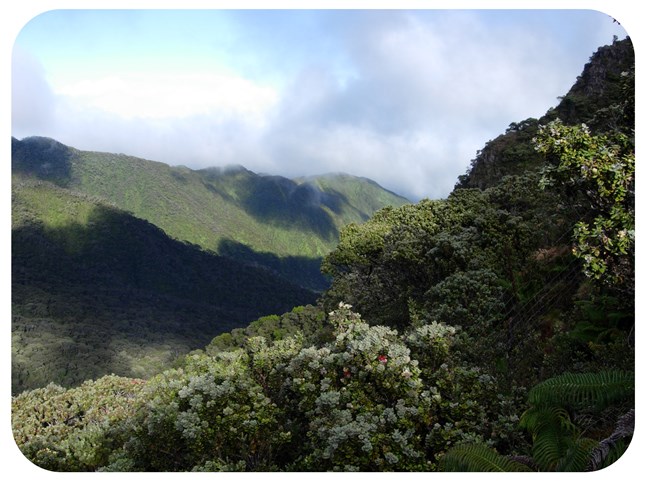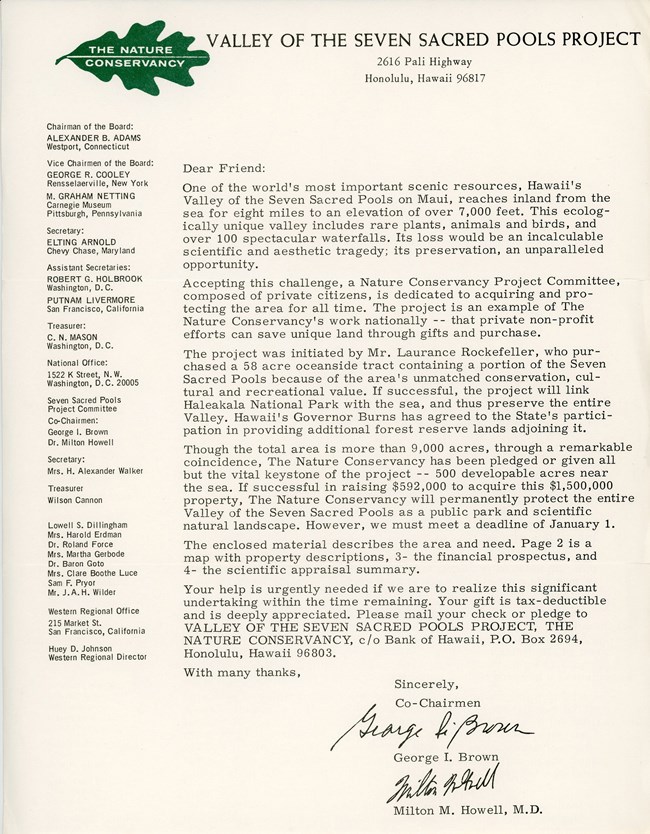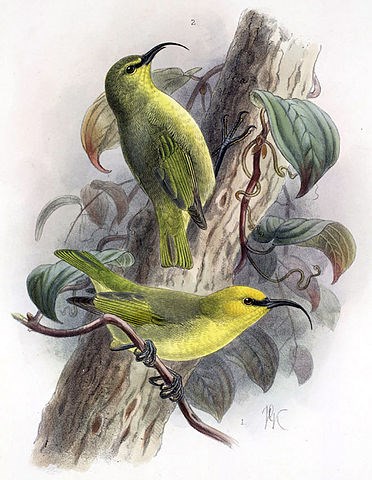
In 1967, The Nature Conservancy sponsored the first major scientific expedition into upper Kīpahulu Valley. The goal of the Kīpahulu Expedition was to gather basic information about the plants and animals in the valley, and to make recommendations about the Valley’s long-term conservation. This year marks the 50th anniversary of the expedition, which is still seen as a vital contribution to the understanding of Hawaiian ecosystems. One of the Last Pristine Hawaiian Rainforests The unspoiled land of upper Kīpahulu Valley shelters many rare native Hawaiian species. The 1967 expedition established the ecological value of Kīpahulu Valley, helping to pave the way for its protection as a biological reserve. The only people that are allowed into the reserve are scientists and managers authorized to conduct research and conservation. The absence of trails and development in the valley is intended to conserve its pristine character. 
In 1969, two years after the expedition, The Nature Conservancy (TNC) purchased close to 10,000 acres of land including the upper Kīpahulu Valley with monetary and land donations from hundreds of individuals. Laurance Rockefeller, whose original 58-acre land donation included part of the famous lower ‘Ohe‘o pools, was key to this effort. Charles Lindbergh, the famous aviator who deeply loved Kīpahulu, assisted with the fundraising effort. Many local residents donated or sold their land to TNC. TNC then transferred the land to Haleakalā National Park for permanent preservation. The Expedition The Nature Conservancy, which is dedicated to the conservation of the lands and waters on which all life depends, organized the Kīpahulu Expedition with the support of the National Park Service and others. The month-long expedition sponsored a group of 14 specialists, who performed groundbreaking research in Kīpahulu Valley during August, 1967. The expedition established three primitive basecamps along the valley’s central or ridge trail. Experienced cowboys from Kīpahulu Cattle Company, including ranch manager Jack Lind, served as the porters and trail guides, leading the visiting scientists into the remote valley. The porters carried camping supplies, dried foods, photographic film, mail, and plant, soil and insect specimens up and down the treacherous landscape of Kīpahulu Valley. 
Non-NPS photo Findings The expedition allowed for scientists to see rare birds that were suspected to be extinct, such as the critically endangered ʻākohekohe (crested honeycreeper), endangered Maui ‘alauahio (Maui creeper), critically endangered kiwikiu (Maui parrotbill), and the critically endangered Maui nukupuʻu, whose last confirmed sighting was in 1989. Preservation Now Ranging from tropical rain forest to sub-alpine scrubland, the Kīpahulu Valley is vital for the preservation of native Hawaiian plants, insects and birds. Since the Kīpahulu Valley’s leading-edge research in 1967, National Park Service (NPS) conservation efforts have been ongoing. The NPS has fenced the upper portion of the valley to exclude invasive animals such as goats and pigs that are harmful to the native ecosystem. The NPS monitors and maintains the fence today.NPS staff continually works to remove invasive plants that are harmful to the valley. In addition, the park staff collects seeds and cuttings from native species unique to Kīpahulu Valley, propagates them in greenhouses, and out-plants them back into the valley in order to help restore their populations. This in turn helps to establish more native habitat for Hawai‘i’s endangered native birds. |
Last updated: September 25, 2024
